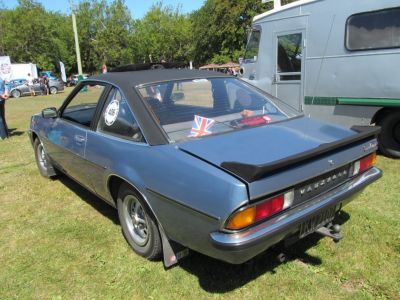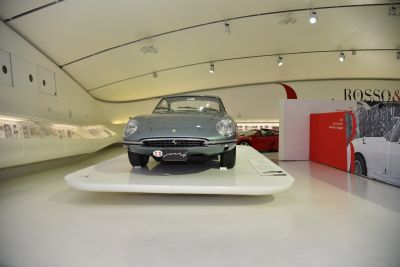 1962 Maserati Sebring Series I (Tipo AM 101/S) Dimensions, Size & Specs
1962 Maserati Sebring Series I (Tipo AM 101/S) Dimensions, Size & SpecsMeasurements of the 1962 Maserati Sebring Series I, engineered for optimal performance and comfort
| Dimensions | |
|---|---|
| Length: | 4470 mm176.0 in14.7 ft |
| Width: | 1650 mm65.0 in5.4 ft |
| Height: | 1300 mm51.2 in4.3 ft |
| Trunk Capacity: | 340 liter12.0 cu ft |
The Maserati Sebring Series I (Tipo AM 101/S), produced between 1962 and 1965, represents a classic grand touring coupe from the legendary Italian manufacturer. With an elegant design and refined proportions, this model is a distinctive example of Maserati’s approach to luxury and performance during the early 1960s. The Sebring Series I measures 4470 mm (176 inches) in length, 1650 mm (65 inches) in width, and stands at a height of 1300 mm (51 inches), giving it a sleek and low-profile silhouette that complements its sporty nature. The coupe's dimensions reflect the car's balance between sporty agility and comfortable cruising, characteristic of the GT class. Additionally, the Sebring offers a practical luggage capacity of 340 liters (about 12 cubic feet), which is generous for a coupe of its era, allowing for comfortable longer journeys with adequate storage space. The car's size and elegant styling make it suitable for drivers seeking a blend of performance, classic Maserati craftsmanship, and usable everyday utility. Overall, the Sebring Series I remains a highly regarded vintage grand tourer cherished by collectors and enthusiasts for its timeless design and well-proportioned size.
Discover the standout features that make the 1962 Maserati Sebring Series I a leader in its class
Have a question? Please check our knowledgebase first.
The Maserati Sebring Series I (Tipo AM 101/S), produced between 1962 and 1965, features a length of 4470 millimeters (approximately 176 inches), a width of 1650 millimeters (around 65 inches), and a height of 1300 millimeters (about 51 inches). These compact, elegant dimensions reflect its grand tourer class and allow for a sleek, low-profile coupe design that balances style with road presence.
The Maserati Sebring Series I offers a luggage capacity of 340 liters (around 12 cubic feet). For a 1960s grand tourer coupe, this capacity is quite practical, providing ample space for travel luggage despite the car's sporty proportions. Many grand tourers from that time featured similar or smaller trunk volumes, emphasizing a balance between elegant styling and functional touring ability.
At 1650 millimeters (65 inches) wide, the Maserati Sebring Series I is narrower than many modern vehicles, which typically range wider to improve interior space and safety. This narrower width contributes to more agile handling and easier maneuverability through tight roads typical of its era. Regarding garage accommodation, this width easily fits standard garages, which commonly allow widths of about 2.4 meters (about 7 feet 10 inches), leaving sufficient clearance around the vehicle for access.
Yes, the Maserati Sebring Series I fits comfortably into a standard residential garage. With dimensions of 4470 mm (176 inches) in length, 1650 mm (65 inches) in width, and 1300 mm (51 inches) in height, it is smaller than many contemporary cars and well within the typical garage dimensions. Standard garages often measure around 2.4 to 3 meters (7.9 to 9.8 feet) in width and over 5 meters (16.4 feet) in length, providing ample space to store the Sebring with room to spare for easy entry and exit.
With a height of 1300 millimeters (roughly 51 inches), the Maserati Sebring Series I boasts a low-slung silhouette typical of grand tourer coupes of the 1960s. This low profile aids aerodynamic efficiency by reducing air resistance at higher speeds, contributing to better performance and fuel economy for its time. However, the lower roofline means a modest cabin height, which may slightly limit headroom and forward visibility compared to taller vehicles. The design optimizes a balance between stylish aesthetics and driver experience.
The Maserati Sebring Series I, based on the Maserati 3500 GT chassis but slightly modified, retained many dimensional similarities. The Sebring measures 4470 mm in length, slightly longer than the 3500 GT, which was around 4450 mm. The width of 1650 mm in the Sebring is comparable to the 3500 GT, but the Sebring features a lower height at 1300 mm versus slightly taller predecessors. These dimensions reflect the Sebring's stylistic updates towards a sleeker coupe design while maintaining grand touring practicality.
The Maserati Sebring Series I holds its own in size compared to other 1960s grand tourers. For instance, it is somewhat shorter and narrower than the Jaguar E-Type Series 1, which measures roughly 4450 mm in length but is wider at about 1650-1680 mm, and taller at close to 1270-1300 mm in height. Compared to the Ferrari 250 GT Lusso, the Sebring is similar in length but narrower and lower. Overall, the Maserati Sebring's dimensions contribute to a compact yet elegant design typical of exclusive European grand tourers.
The Maserati Sebring Series I features a classic two-door coupe body style with elegant, flowing lines emblematic of early 1960s Italian grand touring cars. Its design incorporates a long, low hood, a fastback rear roofline, and refined chrome detailing. The coachbuilt body by Carrozzeria Vignale adds a distinctive and bespoke element with clean side profiles and a purposeful stance. The compact dimensions, combined with the sleek roofline and sculpted fenders, create a timeless grand tourer aesthetic.
Underneath its elegant exterior, the Maserati Sebring Series I is powered by a Maserati inline-six engine derived from the 3500 GT, producing a robust 245 horsepower. It features a four-speed manual transmission and rear-wheel drive layout, offering an engaging driving experience. The car benefits from updated suspension tuning and improved braking systems compared to earlier models, balancing performance, and comfort fitting of a luxury grand tourer. These engineering details helped the Sebring stand out among its competitors for refinement and drivability.
The Maserati Sebring Series I, produced from 1962 to 1965, represents an important chapter in Maserati's evolution of grand touring cars. It was developed as a successor to the 3500 GT, catering to customers desiring a refined and sporty coupe with improved styling and luxury features. The Sebring's name honors Maserati's victory in the 12 Hours of Sebring endurance race, linking the model to the brand's motorsport heritage. It helped establish Maserati's reputation for blending performance, exclusivity, and Italian design excellence during the 1960s.
Discover similar sized cars.

| Production: | 1975-1979 |
|---|---|
| Model Year: | 1976 |
| Length: | 4445 mm175.0 in |
| Width: | 1670 mm65.7 in |
| Height: | 1277 mm50.3 in |

| Production: | 1966-1968 |
|---|---|
| Model Year: | 1966 |
| Length: | 4470 mm176.0 in |
| Width: | 1665 mm65.6 in |
| Height: | 1282 mm50.5 in |
